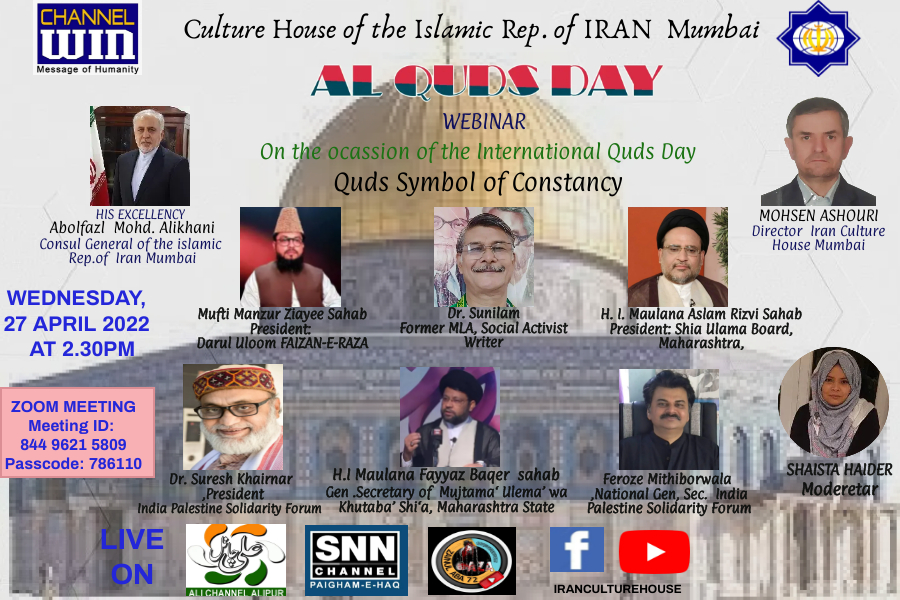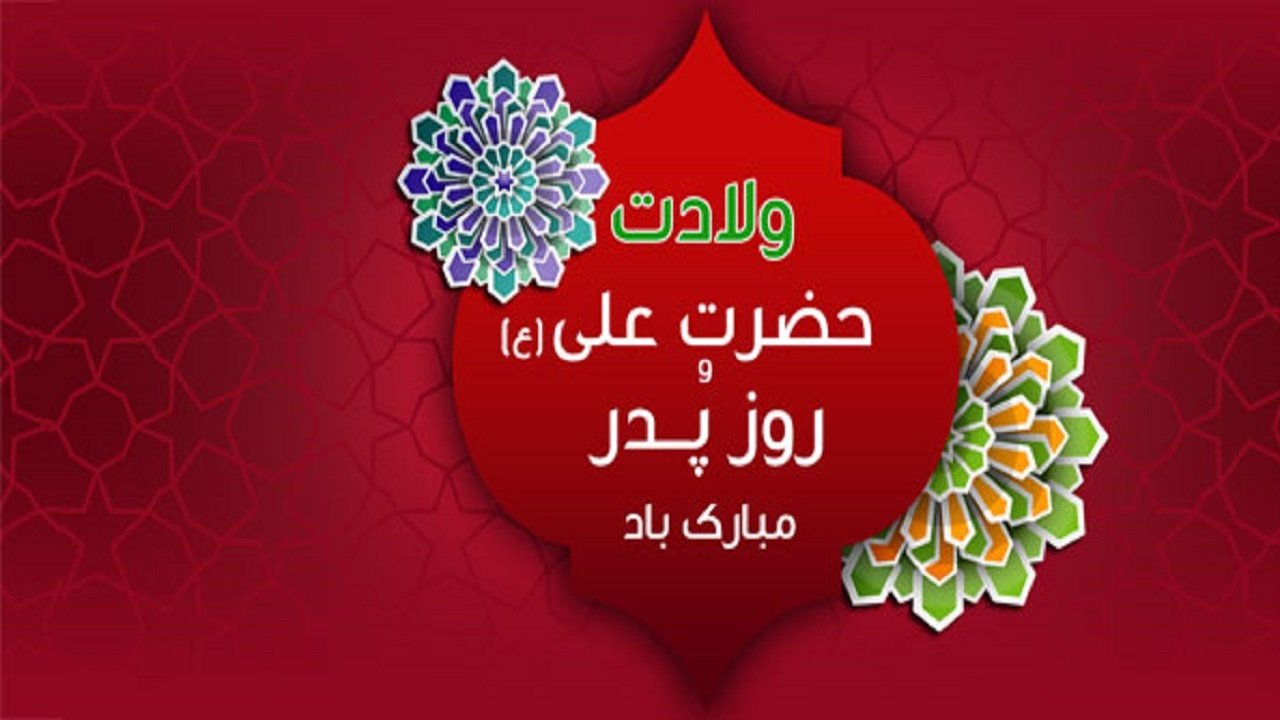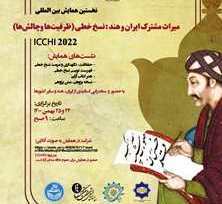Total: 0Toman
- Event group :
- Event Status : On performing
- Start date : Apr 14 2022
- End date : Apr 14 2022
- Place :
- Capacity : Person

Commemoration of Persian Poet Farid od-Din Attar Neishaburi
The 25th of Farvardin of the Iranian calendar is commemorated every year as the Day of the famous 13th century Persian poet, Farid ud-Din Attar Neishaburi, who was martyred by t he Mongol marauders of Genghis Khan during their barbaric invasion of Khorasan and the massacre of, often entire populations, of towns and cities.
he Mongol marauders of Genghis Khan during their barbaric invasion of Khorasan and the massacre of, often entire populations, of towns and cities.
Following is a special feature on this great Gnostic whose works remain alive to this day despite the passing of 8 centuries.
Born in northeastern Iran in 540 AH, around 1145 AD, and named Farid od-Din by his father who was a chemist and perfumer, as the surname “Attar” suggests, he received an excellent education in various fields. He practiced the profession of pharmacy and personally attended to a very large number of patients, while composing poetry under the penname “Attar”. At the same time, he started writing books in versified Persian such as Mosibat-Namah, Ilahi-Namah, and Khosrow-Namah. The people he treated used to confide their troubles in him and this affected him deeply to the extent that he eventually left his profession and traveled widely - to Baghdad, Basra, Kufa, Mecca, Medina, Damascus, Khwarezm, and the cities of northern India, meeting with Sufi leaders, before returning to his hometown, as a person well-versed in mysticism and Gnosis. The thoughts, as is evident in Attar’s works, reflect the evolution of the Sufi movement. The starting point is the idea of the soul’s awaited release from the physical body and return to its source in the other metaphysical world, can be experienced during the present life in mystic union attainable through inward purification. Although Attar wrote the prose work “Tazkerat-al-Awliya” on the life of Gnostics and Mystics, the finest mirror of his thoughts is the long poetical work “Manteq at-Tayr” or the Discourse of the Birds.

In this work, the birds, led by the hoopoe, go in search of their king, Simurgh or the legendry Phoenix. Their quest takes them through seven valleys, in the first of which a hundred difficulties assail them. They undergo many trials as they try to free themselves of what is precious to them in order to change their state. Once successful, they ask for a refreshing drink to dull the effects of dogma, belief, and unbelief on their lives. In the second valley, the birds give up reason for love and, with a thousand hearts to sacrifice, continue their quest for discovering the Simurgh. The third valley confounds the birds, especially when they discover that their worldly knowledge has become completely useless and their understanding has become ambivalent. There are different ways of crossing this valley, and all birds do not fly alike. Understanding can be arrived at variously—some have found the Mihrab or the prayer niche of the mosque, others the idol. The fourth valley is introduced as the valley of detachment, i.e., detachment from desire to possess, and the wish to discover. The birds begin to feel that they have become part of a universe that is detached from their physical reality. In their new world, the planets are as minute as sparks of dust and elephants are not distinguishable from ants. It is not until they enter the fifth valley that they realize that unity and multiplicity are the same. And as they have become entities in a vacuum with no sense of eternity, they realize that the One and Only Almighty God is beyond multiplicity and eternity. Stepping into the sixth valley, the birds become astonished at the beauty of the Beloved. Experiencing extreme sadness and dejection, they feel that they know nothing, and understand nothing. They are not even aware of themselves. Only thirty birds reach the abode of the Simurgh or the Phoenix. But there is no Phoenix anywhere to see. The chamberlain keeps them waiting for the Phoenix long enough for the birds to realize that they themselves are the Si-Murgh, that is, “Thirty Birds, since in Persian “Si” is "Thirty” and “Murgh” means “Bird”. The seventh valley is the valley of deprivation, forgetfulness, dumbness, deafness, and death. The present and future lives of the thirty successful birds become shadows chased by the celestial Sun, as they become absorbed in the Sea of His existence.

Attar is one of the most famous mystic poets of Iran. His works were the inspiration for the famous Gnostic and Persian poet Mowlna Jalal od-Din Balkhai Rumi and many other poets. Attar, along with Sanai Ghaznavi, had the greatest influences on Rumi, who has mentioned both of them with the highest esteem several times in his poetry. Attar inspired poets and mystics in the Subcontinent as well as in Central Asia and Anatolia, where Persian language and Iranian culture were dominant. Later his works began to be translated in European languages, to the extent that he has received huge popularity among Western Orientalists as one of the most striking meteors in the Eastern sky of mysticism. Many of these Orientalists’ works have been devoted to researching the works of Attar. From almost two hundred years ago, Europeans tried to introduce Attar's work to the Western society. Silvestere de Sacy was one of the first European scholars in introducing Attar to the West. In 1816, he translated the poems of the Pand-Namah in Paris. The second translation of Pand-Namah was brought out in Latin by Gabriel GaiTelin in 1835 and published in Helinski, Finland. Baron Eric Hermelin translated the Pand-Namah in Swedish language in 1929, followed by the translation of Attar’s prose work Tazkerat-al-Awliya in four volumes during the period of 1931-43. The famous English scholar A. J. Arberry translated the Tazkera of Attar into English under the title of "Muslim Saints and Mystics".
The Tazkerat al-Awliya has also been translated into the Turkish, Urdu, and several other languages, which are proof of the popularity of Farid od-Din Attar’s thoughts and
poetry.
Following is a special feature on this great Gnostic whose works remain alive to this day despite the passing of 8 centuries.
Born in northeastern Iran in 540 AH, around 1145 AD, and named Farid od-Din by his father who was a chemist and perfumer, as the surname “Attar” suggests, he received an excellent education in various fields. He practiced the profession of pharmacy and personally attended to a very large number of patients, while composing poetry under the penname “Attar”. At the same time, he started writing books in versified Persian such as Mosibat-Namah, Ilahi-Namah, and Khosrow-Namah. The people he treated used to confide their troubles in him and this affected him deeply to the extent that he eventually left his profession and traveled widely - to Baghdad, Basra, Kufa, Mecca, Medina, Damascus, Khwarezm, and the cities of northern India, meeting with Sufi leaders, before returning to his hometown, as a person well-versed in mysticism and Gnosis. The thoughts, as is evident in Attar’s works, reflect the evolution of the Sufi movement. The starting point is the idea of the soul’s awaited release from the physical body and return to its source in the other metaphysical world, can be experienced during the present life in mystic union attainable through inward purification. Although Attar wrote the prose work “Tazkerat-al-Awliya” on the life of Gnostics and Mystics, the finest mirror of his thoughts is the long poetical work “Manteq at-Tayr” or the Discourse of the Birds.
In this work, the birds, led by the hoopoe, go in search of their king, Simurgh or the legendry Phoenix. Their quest takes them through seven valleys, in the first of which a hundred difficulties assail them. They undergo many trials as they try to free themselves of what is precious to them in order to change their state. Once successful, they ask for a refreshing drink to dull the effects of dogma, belief, and unbelief on their lives. In the second valley, the birds give up reason for love and, with a thousand hearts to sacrifice, continue their quest for discovering the Simurgh. The third valley confounds the birds, especially when they discover that their worldly knowledge has become completely useless and their understanding has become ambivalent. There are different ways of crossing this valley, and all birds do not fly alike. Understanding can be arrived at variously—some have found the Mihrab or the prayer niche of the mosque, others the idol. The fourth valley is introduced as the valley of detachment, i.e., detachment from desire to possess, and the wish to discover. The birds begin to feel that they have become part of a universe that is detached from their physical reality. In their new world, the planets are as minute as sparks of dust and elephants are not distinguishable from ants. It is not until they enter the fifth valley that they realize that unity and multiplicity are the same. And as they have become entities in a vacuum with no sense of eternity, they realize that the One and Only Almighty God is beyond multiplicity and eternity. Stepping into the sixth valley, the birds become astonished at the beauty of the Beloved. Experiencing extreme sadness and dejection, they feel that they know nothing, and understand nothing. They are not even aware of themselves. Only thirty birds reach the abode of the Simurgh or the Phoenix. But there is no Phoenix anywhere to see. The chamberlain keeps them waiting for the Phoenix long enough for the birds to realize that they themselves are the Si-Murgh, that is, “Thirty Birds, since in Persian “Si” is "Thirty” and “Murgh” means “Bird”. The seventh valley is the valley of deprivation, forgetfulness, dumbness, deafness, and death. The present and future lives of the thirty successful birds become shadows chased by the celestial Sun, as they become absorbed in the Sea of His existence.
Attar is one of the most famous mystic poets of Iran. His works were the inspiration for the famous Gnostic and Persian poet Mowlna Jalal od-Din Balkhai Rumi and many other poets. Attar, along with Sanai Ghaznavi, had the greatest influences on Rumi, who has mentioned both of them with the highest esteem several times in his poetry. Attar inspired poets and mystics in the Subcontinent as well as in Central Asia and Anatolia, where Persian language and Iranian culture were dominant. Later his works began to be translated in European languages, to the extent that he has received huge popularity among Western Orientalists as one of the most striking meteors in the Eastern sky of mysticism. Many of these Orientalists’ works have been devoted to researching the works of Attar. From almost two hundred years ago, Europeans tried to introduce Attar's work to the Western society. Silvestere de Sacy was one of the first European scholars in introducing Attar to the West. In 1816, he translated the poems of the Pand-Namah in Paris. The second translation of Pand-Namah was brought out in Latin by Gabriel GaiTelin in 1835 and published in Helinski, Finland. Baron Eric Hermelin translated the Pand-Namah in Swedish language in 1929, followed by the translation of Attar’s prose work Tazkerat-al-Awliya in four volumes during the period of 1931-43. The famous English scholar A. J. Arberry translated the Tazkera of Attar into English under the title of "Muslim Saints and Mystics".
The Tazkerat al-Awliya has also been translated into the Turkish, Urdu, and several other languages, which are proof of the popularity of Farid od-Din Attar’s thoughts and poetry.









_1.jpg)
















_1_crop.jpg)
.jpg)


_1.jpg)





.jpg)





_crop.jpeg)



_1_crop.jpeg)


_1_3.png)













.jpg)















